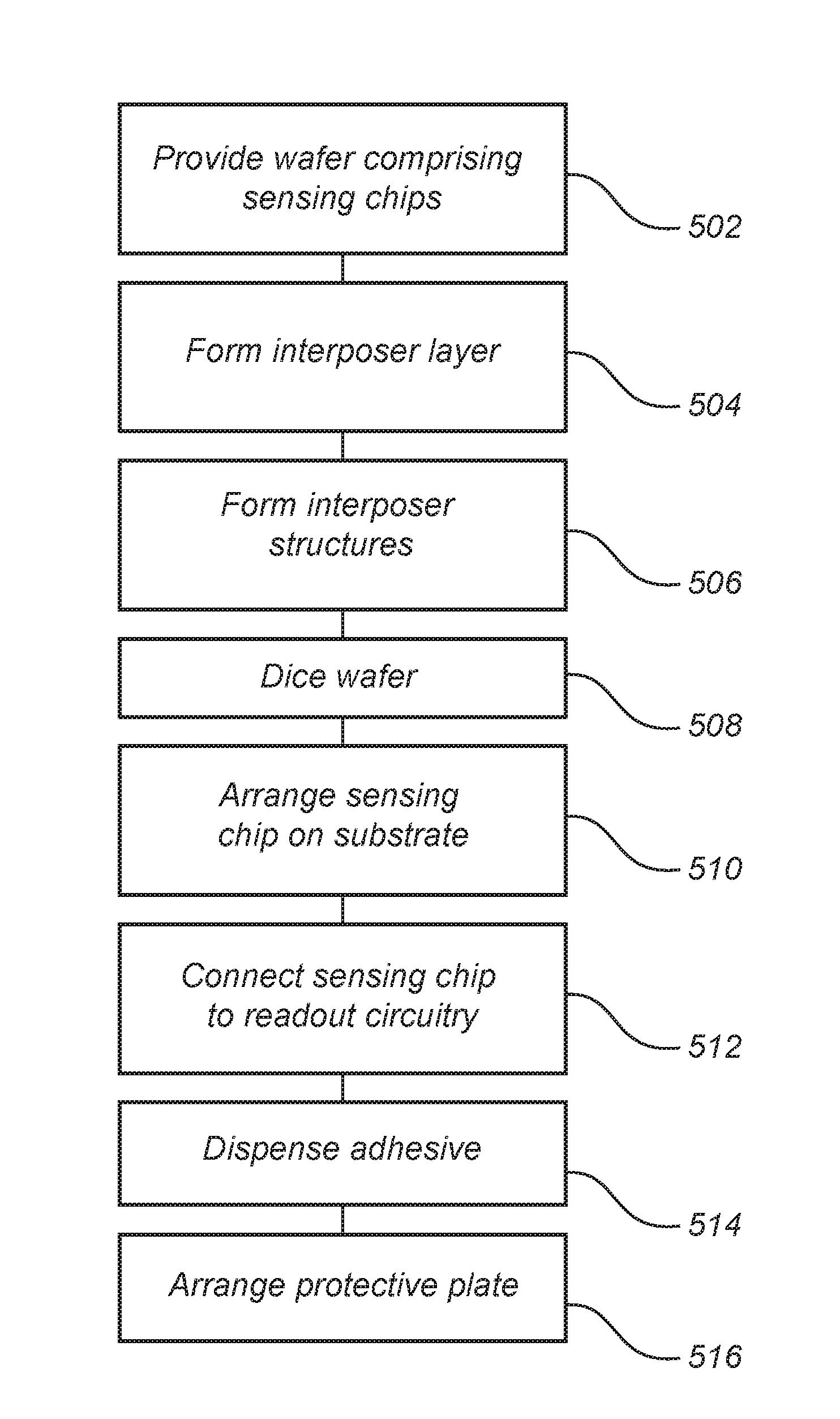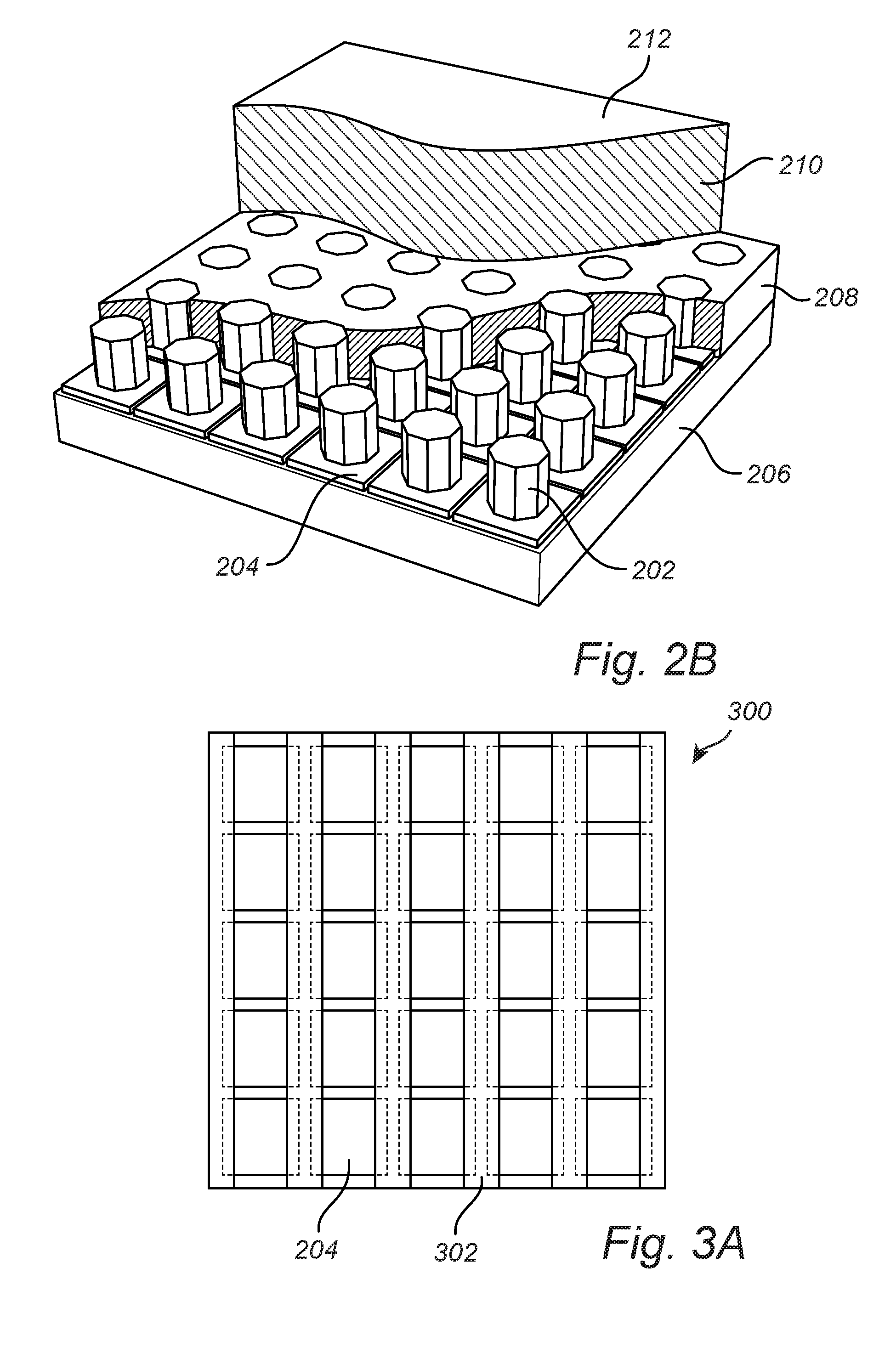Fingerprint sensing device with interposer structure
a technology of fingerprint and interposer, which is applied in the field of fingerprint sensing devices, can solve problems such as unsatisfactory aesthetic effects, and achieve the effects of improving capacitive coupling, improving capacitive coupling, and improving capacitive coupling
- Summary
- Abstract
- Description
- Claims
- Application Information
AI Technical Summary
Benefits of technology
Problems solved by technology
Method used
Image
Examples
Embodiment Construction
[0047]In the present detailed description, various embodiments of a fingerprint sensing device according to the present invention are mainly discussed with reference to a capacitive fingerprint sensing device. A method for manufacturing a fingerprint sensing device is also discussed.
[0048]FIG. 1 is a schematic illustration of a handheld device 100 comprising a fingerprint sensing device 102 comprising a touchscreen display 104. A fingerprint sensing device 102 can be used in for example a mobile phone, a tablet computer, a portable computer or any other electronic device requiring a way to identify and / or authenticate a user.
[0049]FIG. 2A is a schematic illustration of a fingerprint sensing device 200 according to an embodiment of the invention, as seen in a top view. In particular, FIG. 2A illustrates the outline of a plurality of interposer structures 202, where each interposer structure 202 is arranged on a sensing element 204 of the sensing device 200.
[0050]FIG. 2B illustrates t...
PUM
 Login to View More
Login to View More Abstract
Description
Claims
Application Information
 Login to View More
Login to View More - R&D
- Intellectual Property
- Life Sciences
- Materials
- Tech Scout
- Unparalleled Data Quality
- Higher Quality Content
- 60% Fewer Hallucinations
Browse by: Latest US Patents, China's latest patents, Technical Efficacy Thesaurus, Application Domain, Technology Topic, Popular Technical Reports.
© 2025 PatSnap. All rights reserved.Legal|Privacy policy|Modern Slavery Act Transparency Statement|Sitemap|About US| Contact US: help@patsnap.com



